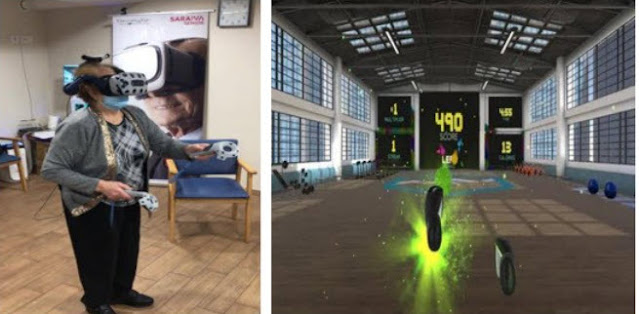За последние несколько лет новые технологии существенно меняют стандарты применения физиотерапии - уход за пациентами становится более доступным, простым в применении; при этом достигаются лучшие результаты.
Рассмотрим некоторые из наиболее популярных технологических направлений в области физиотерапии и их применение.
Виртуальная реальность
Сочетание 3D виртуальной реальности (ВР) и физиотерапии впервые было протестировано в 2019 на группе пациентов, испытывающих проблемы с равновесием и походкой из-за болезни Паркинсона.
Группа людей, использующих технологию виртуальной реальности, "значительно лучше справлялась со своими обязанностями по сравнению с группой обычной физической терапии".
Испанские медики провели клиническое испытание «Иммерсивная виртуальная реальность как новый метод физической терапии. Подход для нестареющих людей: Удобство использования и влияние на баланс. Результаты программы упражнений на основе игр».
Оно показало, что физическая реабилитация может быть поддержана с помощью тренировочных приложений, основанных на упражнениях. Использование иммерсивной ВР повышает мотивацию, обучающие эффекты, может обеспечить более высокий уровень приверженности к терапии. Оно может также сделать доступным большое количество материальных ресурсов в виртуальном режиме, которые в противном случае физиотерапевты не смогли бы использовать в реальной обстановке. Это является осуществимым и эффективным методом для улучшения равновесия и снижения риска падений у женщин пожилого возраста, проживающих в домах престарелых.
Такие компании, как XRHealth, уже предлагают виртуальное лечение с использованием дополненной реальности. Пациенты получают по почте гарнитуры VR и тренируются с физиотерапевтами, чтобы самостоятельно восстановиться после определенных травм.
Хороший обзор предлагается в работе итальянских физиотерапевтов «Иммерсивная виртуальная реальность в реабилитации после инсульта: Систематический обзор. Андреа Демеко и др.»
Биомеханические системы захвата движений
Носимые технологии находят все большее применение как предпочтительный способ улучшения движения и снятия боли. Как правило, датчики крепятся к различным частям тела - отслеживают и регистрируют движения, основываясь на оптимальном диапазоне движения. Физиотерапевты применяют информацию от этих датчиков с программируемыми приложениями для создания персонализированных планов лечения.
MIO от компании MIO Therapy - первая носимая технологическая платформа, которая объединяет эффективность традиционной физической терапии с интеллектуальными датчиками, лечебными упражнениями, играми и технологией 3D-визуализации для персонализации и улучшения амбулаторной реабилитации и ускорения восстановления. MIO обеспечивает стабильно точные измерения, которые могут быть использованы для мониторинга и персонализации лечения, сокращения времени восстановления и снижения затрат на здравоохранение.
Пациенты прикрепляют датчики к любой части тела с помощью наклеек или гибких ремней, чтобы физиотерапевты могли измерять, собирать и записывать все движения конкретной области тела, предоставляя ключевые данные о диапазоне движения пациента и измеримом прогрессе в выполнении программы упражнений. Чрезвычайно точные датчики измеряют, анализируют и сохраняют данные физиотерапии пациента в облаке для доступа и анализа через приложение MIO. MIO также предлагает 3D-визуализацию в реальном времени, обеспечивая точную картину того, что делает пациент в любой момент, и может использоваться в кабинете или через платформу телемедицины под наблюдением врача.
В приложении представлены индивидуальные планы ухода при определенных травмах. Эти планы лечения включают интерактивные игры, которые способствуют выздоровлению с помощью системы баллов и поощрений.
Обзор направления представлен в статье «Возможности применения биомеханических систем захвата движений человека в медицинской реабилитации. Шейко Г.Е. и др.»
В России предлагаются
Система Орторент Виртуал – инновационное оборудование для проведения виртуальной реабилитации пациентов
Система DynSTABLE (ДинСтейбл) оценки и коррекции расстройств баланса с помощью различных терапевтических приложений с виртуальной реальностью и обратной связью в режиме реального времени.
(Продолжение следует)
#физиотерапия #виртуальнаяреальность #паркинсон
#паркинсона #паркинсонизм #реабилитация #реабилитацияпослеинсульта #реабилитацияпослеоперации
#VR #3D

















